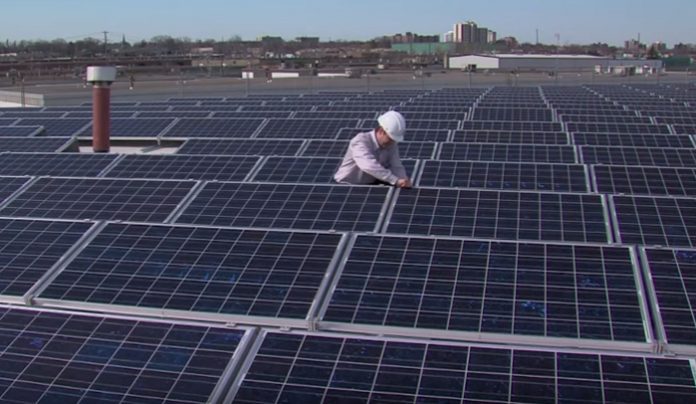One of the most unique aspects of solar energy is the fact that it can produce electricity and power in a number of ways. The most common installation for solar energy collection is the photovoltaic panel, which will convert the rays of the sun into electricity by exciting electrons in silicon cells thanks to photons that are in sunlight.
This movement creates energy, which can then be used in multiple ways. An inverter is required to turn the direct current energy into standard A/C energy that is used in many homes. Most photovoltaic panels come with a net meter and production meter as well, registering energy production and use, which can allow some homes to earn money from their electricity generation efforts from local utilities.
There are other solar power systems which can be combined with the photovoltaic panels or used on their own to create energy as well.
1. Solar hot water systems.
This type of solar energy uses the heat from the sun to increase the temperature of water that is contained within a heating system. This heated water can then be distributed through the home to provide power to a heating system, used as hot water by a household, or for other energy-related needs.
2. Solar thermal power.
This type of solar energy also produces electricity, but it is based on the heat of the sun instead of the light photons that are produced by the sun. The benefit of using thermal power to produce electricity is that direct sunlight does not need to occur for energy to be generated. This can be useful in areas that experience frequently cloudy conditions, like the coastal communities of the US Pacific Northwest.
3. Passive solar heating and daylighting.
Although this form of solar energy doesn’t necessarily produce electricity, it is also one of the easiest ways to take advantage of what the sun can provide. If you stand in front of a window that is in direct sunlight, it feels warmer there. That’s because there is an energy transfer which occurs from the outside environment to the inside environment, creating the heat you feel. Within that transfer is the potential for electricity generation, though in most installations the potential is relatively small and too expensive to be practical.
4. Solar process space heating and cooling.
This form of solar energy uses the heat from the sun to warm up larger spaces. In large buildings, air ventilation must occur to prevent a reduction in the indoor air quality. Heating this air as it moves can use a tremendous amount of energy. By installing collectors that “trap” heat from the sun, the air can be heated effectively before being introduced to the indoor environment, lowering overall energy expenditures.
The process of solar energy producing electricity is similar to most other forms of energy. The solar heat or light creates movement, that movement creates energy, and that energy is then converted into electricity. Because the sun is always available to us, this makes it an affordable and renewable energy resource we can all use.
Crystal Lombardo is a contributing editor for Vision Launch. Crystal is a seasoned writer and researcher with over 10 years of experience. She has been an editor of three popular blogs that each have had over 500,000 monthly readers.


















